A Comprehensive Guide to eCommerce Data Scraping
Dec 25

Introduction
In today’s digital-first world, businesses rely heavily on data to make informed decisions and stay competitive. One of the most effective ways to gather essential information is through eCommerce Data Scraping. This guide to ecommerce data scraping will provide you with an in-depth understanding of its methods, tools, and benefits for your business. Whether you're looking to extract product information from ecommerce sites or seeking eCommerce Scraping Services, this guide covers it all.
What is eCommerce Data Scraping?
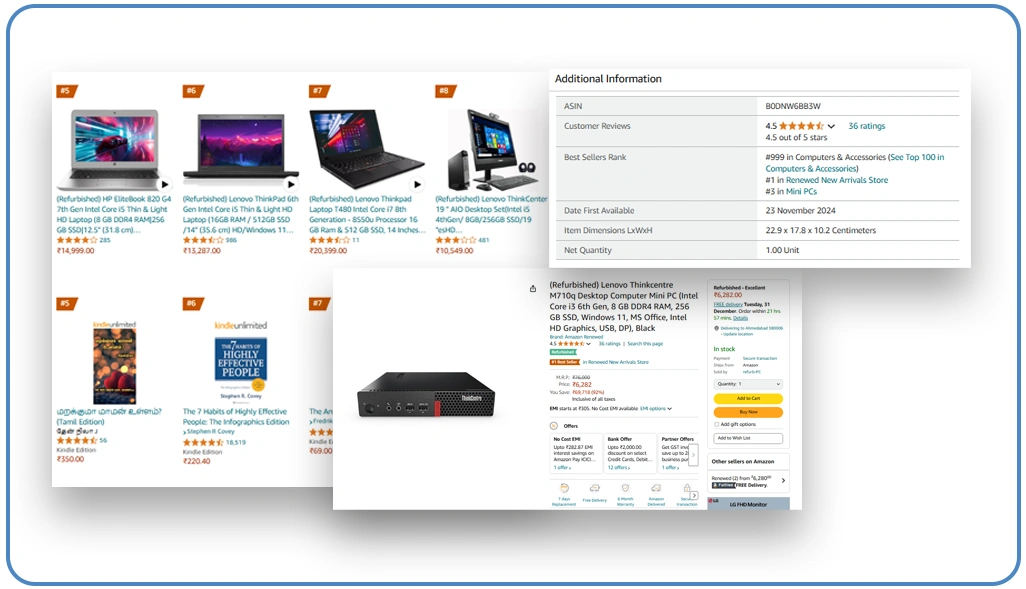
eCommerce Data Scraping is the process of extracting data from online retail platforms and marketplaces. This data can include product information, pricing, customer reviews, and more, which businesses can use to analyze market trends, monitor competitors, and improve their offerings.
Key Elements of Web Scraping Retail Data
- Scraping eCommerce product data such as titles, descriptions, and specifications.
- Capturing pricing and discount details.
- Collecting customer ratings and reviews.
- Extracting competitor inventory details.
The value of eCommerce Data Scraping lies in its ability to provide actionable insights. Businesses can identify trends, improve their offerings, and build a competitive edge. For example, by monitoring competitors' pricing strategies, companies can adjust their prices dynamically to attract more customers. Similarly, by analyzing customer reviews, businesses can enhance product quality and address common issues proactively.
Ultimately, Web Scraping eCommerce data enables businesses to make data-driven decisions that fuel growth and profitability, making it an indispensable tool in the modern digital landscape.
Why is eCommerce Data Scraping Important?
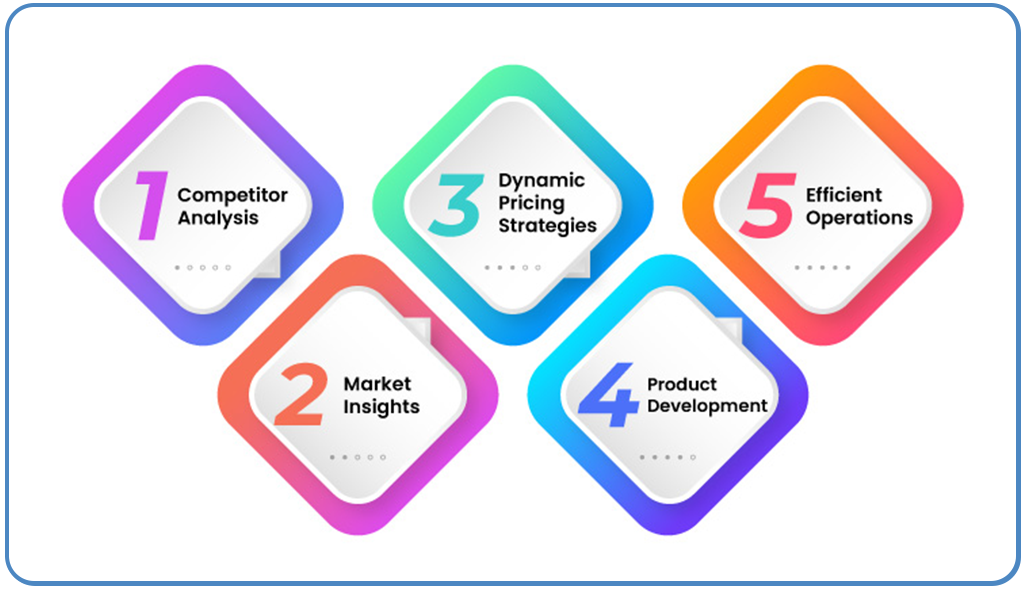
Businesses across industries can benefit significantly from Web Scraping eCommerce data. Here are some reasons why it’s essential:
Competitor Analysis
Keeping an eye on competitors is crucial in the fast-paced eCommerce market. By analyzing competitor pricing, promotions, and inventory, businesses can identify opportunities and threats. For instance, if a competitor runs a sale, a business can adjust its pricing or offer similar promotions to retain customers.
Market Insights
Understanding consumer behavior is vital for creating successful products and marketing strategies. Scraping eCommerce product data allows businesses to gather details on popular products, trending categories, and customer preferences.
Dynamic Pricing Strategies
Real-time data enables businesses to implement dynamic pricing models, adjusting prices based on demand, competition, and market conditions. This ensures optimal pricing that maximizes revenue and customer satisfaction.
Product Development
Analyzing customer reviews and ratings helps businesses identify gaps in their offerings. For example, if customers frequently complain about a specific feature, the business can address it in future product iterations.
Efficient Operations
By collecting data automatically, companies save time and resources compared to manual methods. Automated scraping solutions streamline data collection and enable quick decision-making.
In summary, eCommerce Data Scraping empowers businesses to stay competitive, innovate, and meet customer demands effectively.
Simplifying eCommerce Data Scraping

To make eCommerce website data scraping more accessible, follow these simplified steps:
1. Identify Your Goals
Determine what data you need and how it will be used. This could include product listings, pricing trends, or customer reviews. Clear objectives help streamline the scraping process and ensure that the extracted data aligns with your business needs. For example, if your goal is to monitor competitor pricing, focus on extracting price data, discount details, and promotional offers.
2. Choose the Right Tools
There are several web scraping tools for eCommerce that can help you extract data efficiently. Popular options include:
- Beautiful Soup: A Python library for parsing HTML and XML documents.
- Scrapy: A powerful web scraping framework that supports complex projects.
- Selenium: Ideal for scraping dynamic websites that require interaction.
These tools cater to different levels of technical expertise, from beginner-friendly no-code platforms to advanced frameworks for developers.
3. Understand the Target Website
Study the structure of the website you want to scrape. Familiarize yourself with its HTML layout, CSS classes, and data elements. Tools like browser developer consoles can help identify the exact locations of the data you need.
4. Build or Use a Web Data Crawler
A Web Data Crawler automates the extraction process, navigating through pages and collecting data systematically. This saves time and ensures comprehensive data collection.
5. Stay Compliant
Ensure your scraping activities adhere to legal and ethical guidelines, such as respecting the website’s terms of service and robots.txt file. Ethical scraping helps maintain goodwill and avoids potential legal issues.
Use Cases of eCommerce Data Scraping
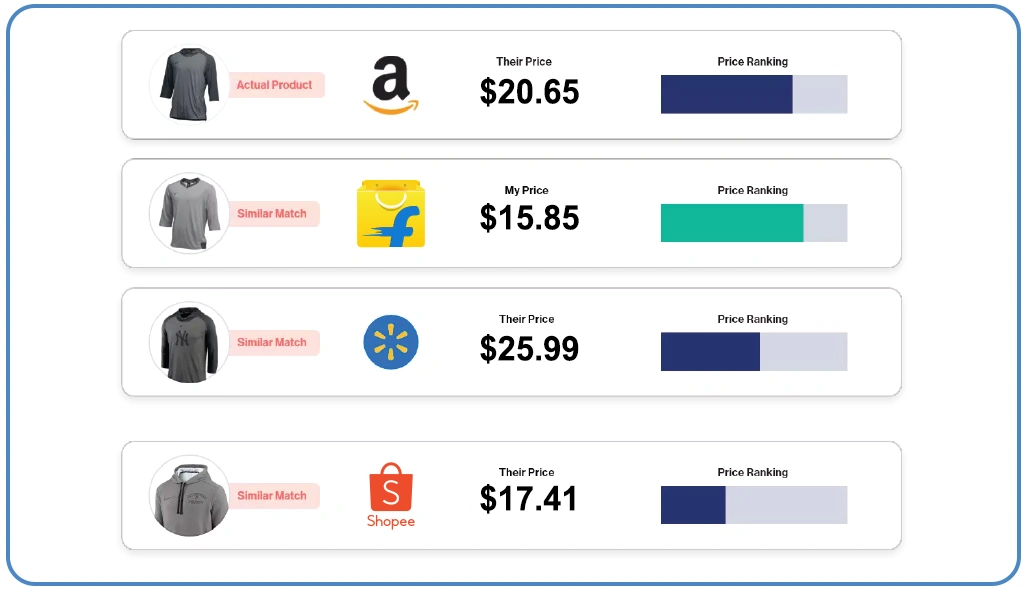
Web scraping online store data has numerous applications that help businesses thrive in a competitive environment. Here are some key use cases:
1. Price Comparison Websites
Aggregators like Google Shopping rely on eCommerce data extraction techniques to gather pricing data from multiple retailers. This allows consumers to compare prices across platforms, while retailers use such insights to position themselves competitively.
2. Inventory Management
Retailers can monitor competitor stock levels and adjust their inventory strategies accordingly. For instance, if a competitor is out of stock on a high-demand item, another retailer can capitalize by promoting their own availability of the product.
3. Sentiment Analysis
By collecting customer reviews, businesses can analyze sentiment to improve product quality and service. For example, a consistent pattern of negative feedback on a competitor’s product can present an opportunity to develop a superior alternative.
4. Market Research
Automated product data scraping allows businesses to track emerging trends and consumer preferences. These insights are invaluable for entering new markets or expanding product lines.
5. Fraud Detection
Identify counterfeit products or unauthorized sellers by monitoring eCommerce platforms. This helps maintain brand integrity and protects customers from substandard products.
eCommerce Data Scraping Techniques
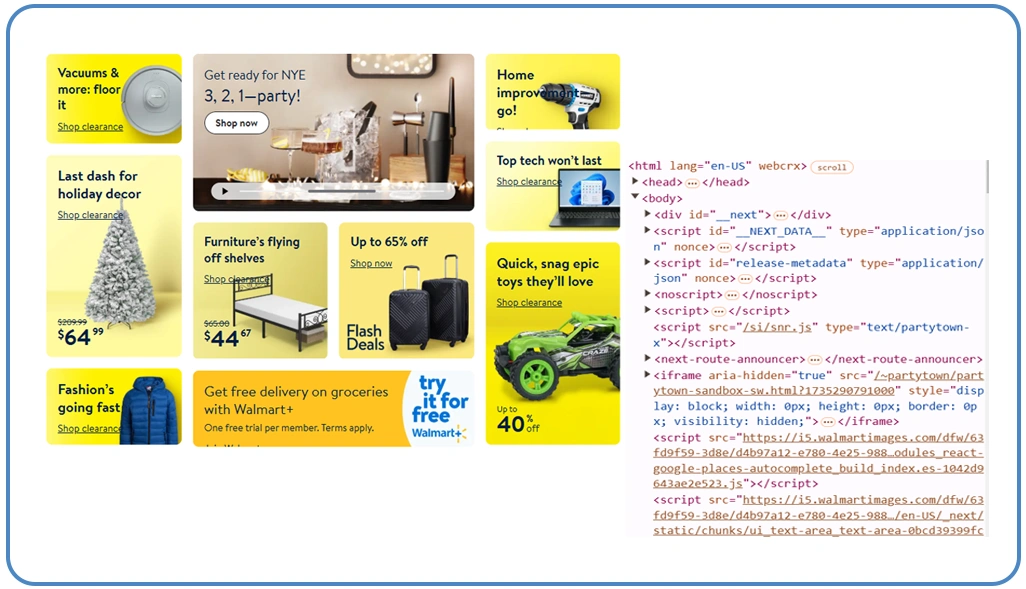
Mastering eCommerce data extraction techniques is essential for accurate and efficient scraping. Here are some popular methods:
1. HTML Parsing
This involves directly extracting data from the HTML code of web pages. Tools like Beautiful Soup are commonly used for this purpose. HTML parsing is effective for simple websites with static content.
2. API Integration
Many eCommerce platforms offer APIs that allow developers to retrieve structured data. APIs are reliable and often provide direct access to data without the need for scraping.
3. Headless Browsing
Using tools like Puppeteer or Selenium, headless browsing simulates user interactions with websites. This technique is ideal for scraping dynamic content generated by JavaScript.
4. Automated Crawlers
Deploying a Web Data Crawler automates the process of navigating through web pages and collecting data systematically. Crawlers are particularly useful for large-scale projects that require comprehensive data extraction.
Each technique has its advantages and is suitable for specific use cases, making it essential to choose the right approach based on your requirements.
Tools for eCommerce Web Scraping
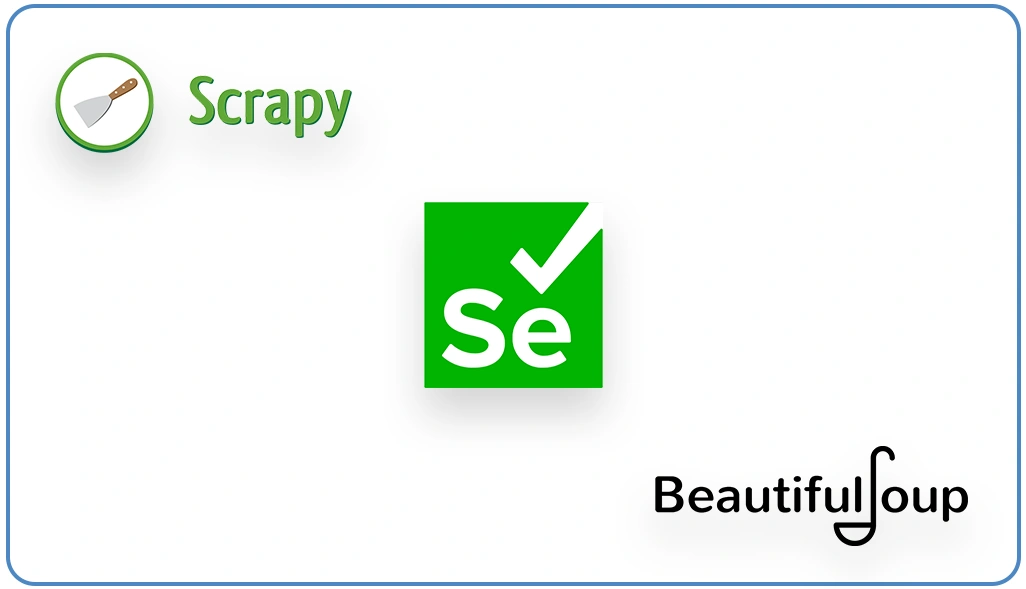
Selecting the right tools is critical for a successful eCommerce web scraping guide. Here are some top choices:
- Scrapy: An open-source web scraping framework designed for developers. It supports complex projects and offers advanced features like built-in data pipelines and selectors.
- Beautiful Soup: A Python library ideal for beginners. It simplifies the process of parsing and extracting data from HTML and XML documents.
Choosing the right tool depends on factors like technical expertise, project complexity, and budget. Investing in the right tools ensures efficient and accurate data collection.
Best Practices for eCommerce Web Scraping
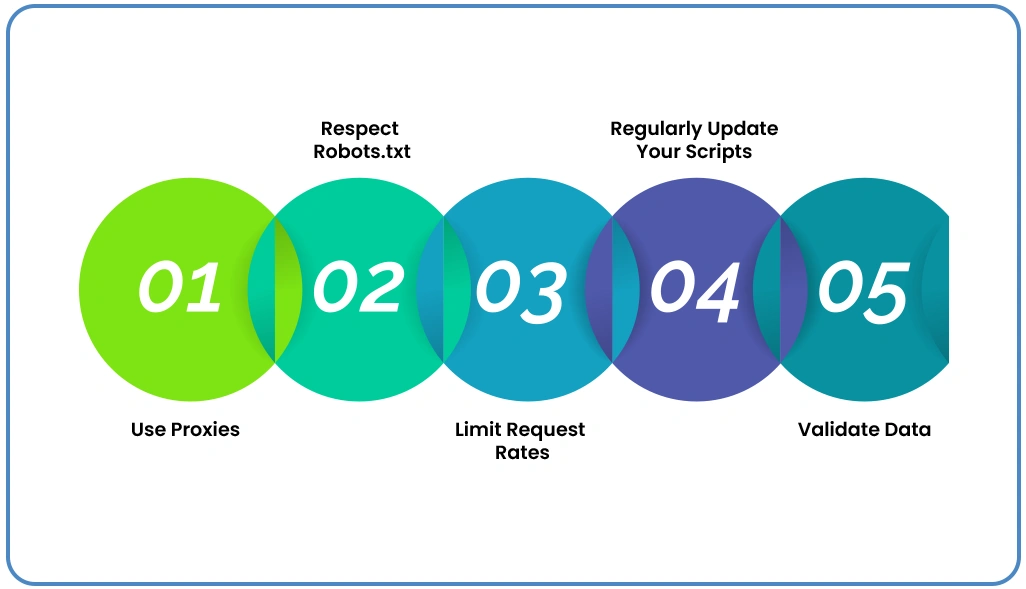
To get the most out of your scraping efforts, follow these best practices for eCommerce web scraping:
1. Use Proxies
Proxies help avoid IP bans and ensure uninterrupted scraping. By rotating IP addresses, proxies make your scraping activities less detectable.
2. Respect Robots.txt
Check the robots.txt file of the target website to understand its scraping policies. While not legally binding, respecting this file ensures ethical scraping.
3. Limit Request Rates
Avoid overloading servers by spacing out your requests. This prevents your IP from being flagged and ensures smoother scraping operations.
4. Regularly Update Your Scripts
Websites frequently change their structures to deter scraping. Keeping your scripts updated ensures continued access to accurate data.
5. Validate Data
After scraping, validate the data to ensure it is accurate, complete, and free of duplicates. Clean data is essential for reliable analysis and decision-making.
By adhering to these best practices, businesses can maximize the benefits of eCommerce Data Scraping while minimizing risks.
Case Studies

Case Study 1: Dynamic Pricing in Action
An online retailer used eCommerce Scraping Services to monitor competitor prices. By implementing real-time price adjustments based on the scraped data, the retailer saw a 20% increase in conversions within three months. This demonstrates the power of dynamic pricing strategies enabled by Web Scraping Retail Data.
Case Study 2: Enhanced Product Development
A cosmetics brand utilized Web Scraping eCommerce data to analyze customer reviews across multiple platforms. This data helped them identify gaps in their product lineup and launch a new range of products that became best-sellers. The insights gained through Scraping eCommerce product data were instrumental in their success.
How eCommerce Data Scraping Helps Businesses
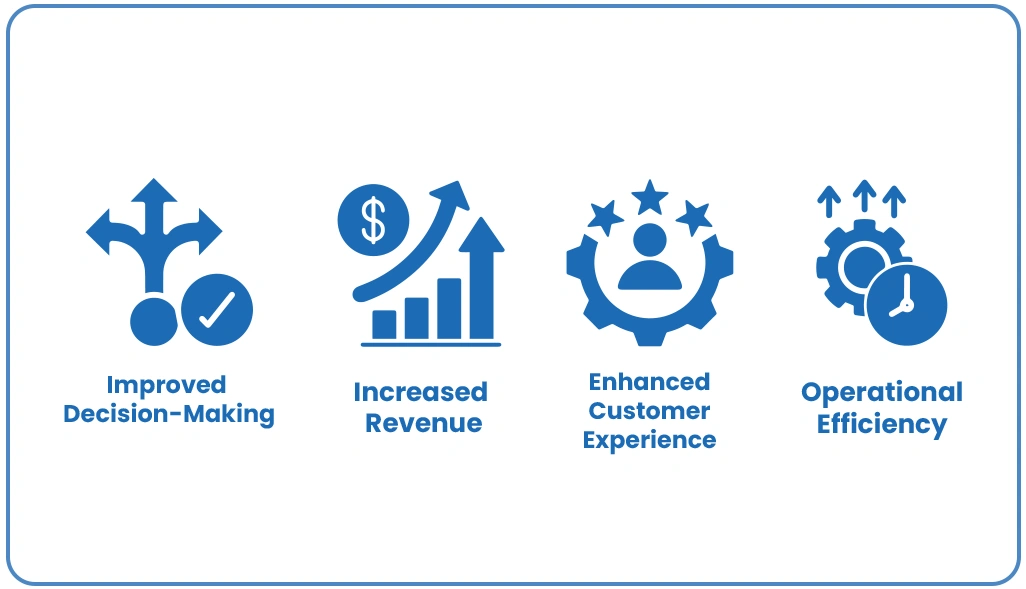
1. Improved Decision-Making: Access to real-time data ensures informed business strategies that align with market trends.
2. Increased Revenue: Dynamic pricing and targeted marketing lead to higher sales and profitability.
3. Enhanced Customer Experience: Analyzing reviews and feedback allows businesses to address pain points effectively, resulting in improved customer satisfaction.
4. Operational Efficiency: Automating data collection saves time and resources, enabling businesses to focus on core activities.
In a competitive market, eCommerce Data Scraping provides businesses with the tools they need to innovate and grow.
Conclusion
Ecommerce Data Scraping is a game-changer for businesses aiming to thrive in the competitive online marketplace. By leveraging the techniques and tools mentioned in this ecommerce website data scraping tutorial, you can unlock valuable insights and drive growth.
Ready to take your data scraping efforts to the next level? With Web Data Crawler, explore our comprehensive solutions and start transforming raw data into actionable insights today!